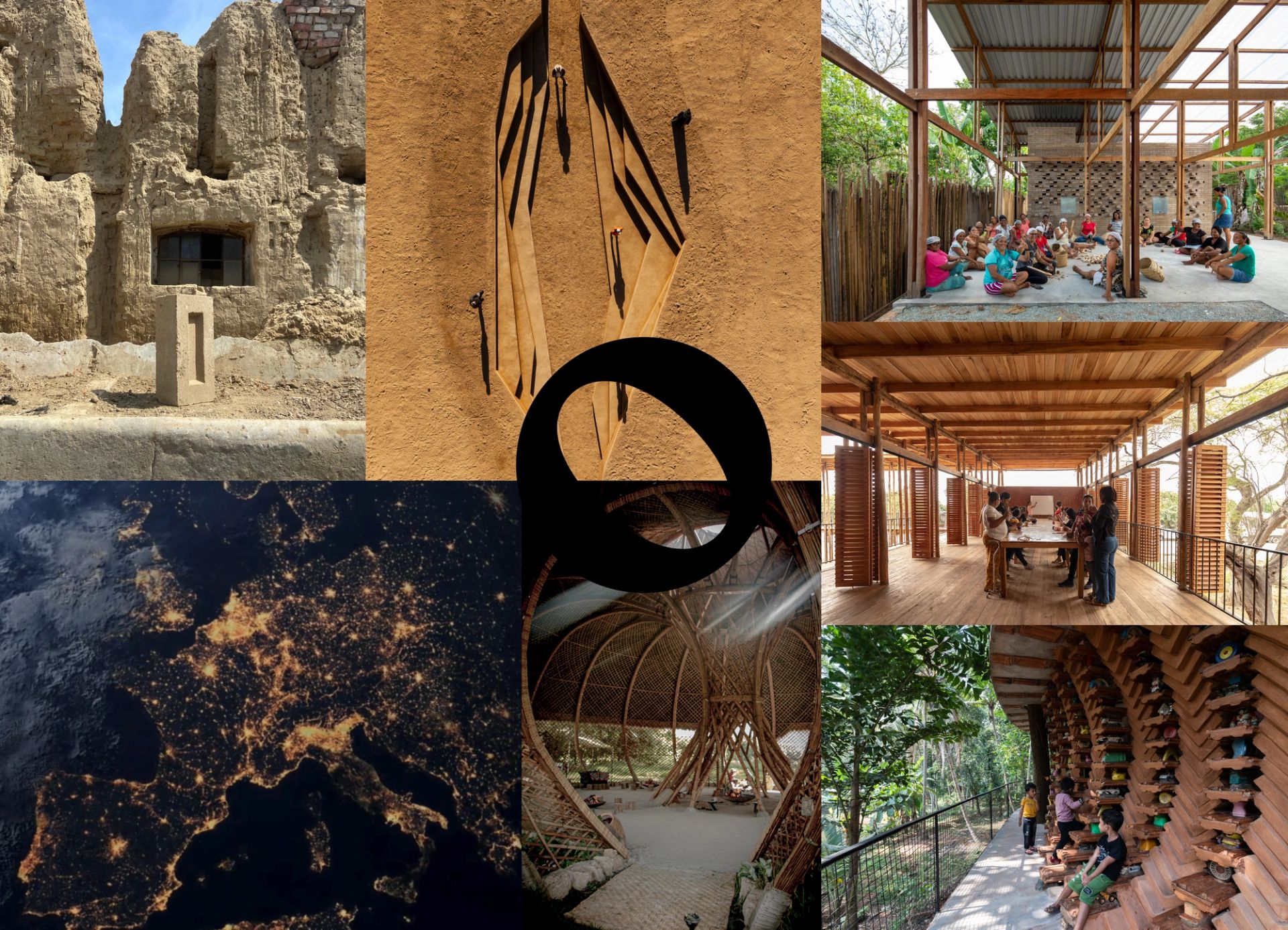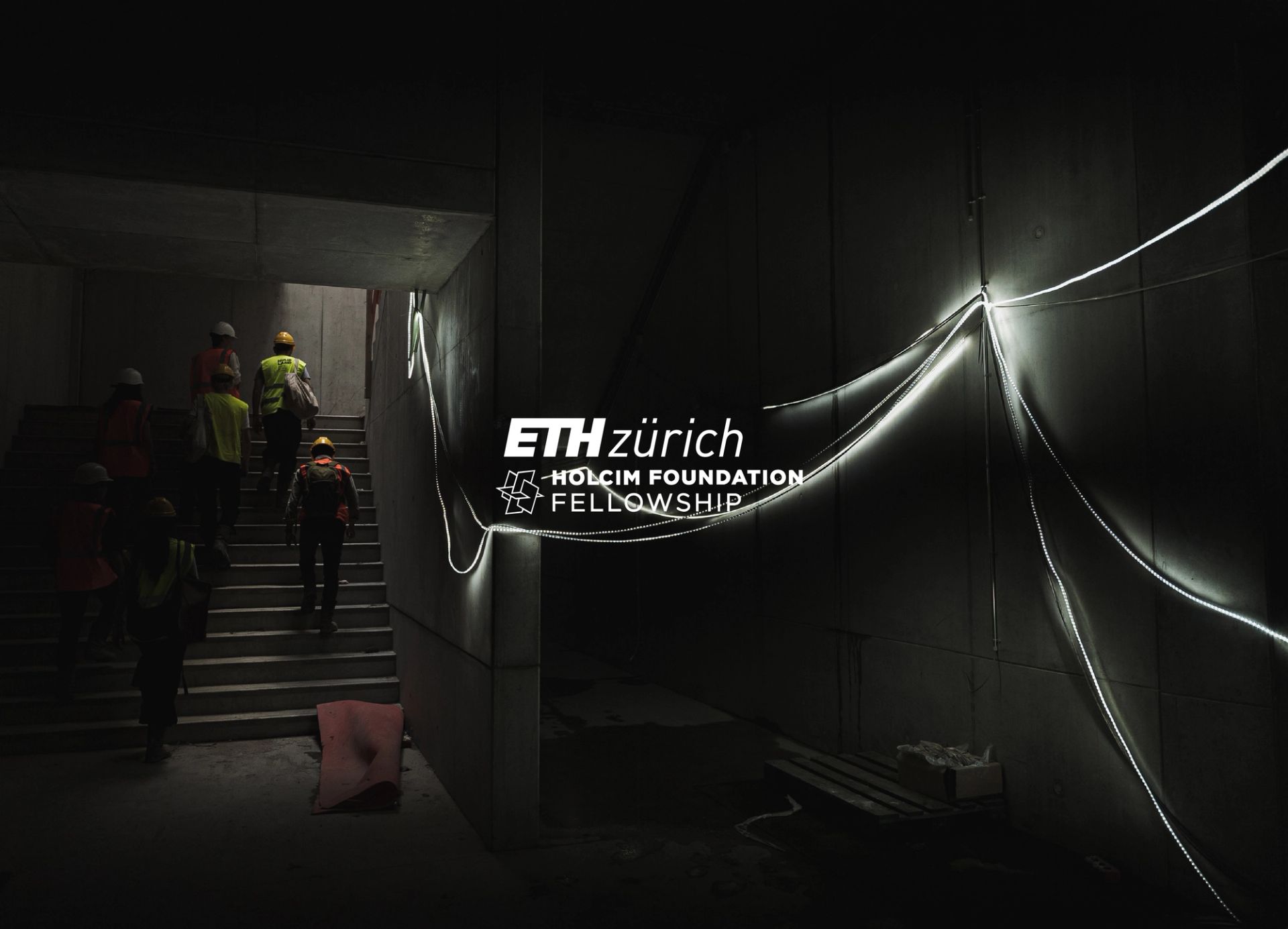The hotly anticipated second edition of the Sharjah Architecture Triennial will elevate practices of resilience and innovation — as well strengthening architectural discourse and mutual celebration between south-west Asia and the African continent — showcased in The Beauty of Impermanence: An Architecture of Adaptability. On the occasion of the official opening, we catch up with architect and SAT 2023’s curator, Tosin Osinowo.
KOOZ Titled “The Beauty of Impermanence: An Architecture of Adaptability”, this edition of the Sharjah Triennial aims to explore how we can “reorient global conversations to create a more sustainable, resilient and equitable future”. Considering that our built environment contributes to 40% of annual global CO2 emissions and almost 2 billion tons of waste per year whilst there could be as many as 1.2 billion climate refugees by 2050, what do these terms mean when looked at from the discipline and practice of architecture?
TOSIN OSHINOWO It is a call to action for an alternative approach. Our current training and practice stems from the illusion of surplus. The expectation is that we can design buildings and our built environment without consciousness of the consequences. It also calls into question our current value system of progress and our approach to sustainability, which needs to go beyond zero-impact, as we are way beyond that mark; the profession needs to be actively involved in schemes of replenishment and renewal.
The built environment must learn from pre-industrialised societies that understand how to build in better balance with ecology. What is exciting is the growing strand of practitioners who are doing just that.
As mentioned in your question, our time is the biggest propagator of waste in human history. So much of our existence revolves around consumption; waste is a significant by-product. The built environment must learn from pre-industrialised societies that understand how to build in better balance with ecology. What is exciting is the growing strand of practitioners who are doing just that. The exhibition is an opportunity to showcase some of these alternative approaches, which don't naturally fall under building materials but are very much about implementing systemic change in how we think, occupy and use our structures.
KOOZ Going back to the will of “reorienting global conversations”, how does this edition of the Triennial deliberately underline and celebrate the arc connecting the thriving disciplinary discourse between Africa and the Middle East?
TO The triennial has only enforced in my mind how interconnected we are. The participants’ practices are far from insular or siloed. The exhibition will showcase examples where practice refined in a location can be applied in a different context, through adaptable principles. The Ugandan initiative BUZIGAHILL works with second-hand clothes from the fast-fashion industry in Kampala. With an understanding of the logistics and international networks that sustain this trade, they found a sorting centre in Sharjah; their exhibit collaborates with this entity. Hive Earth from Ghana have been developing the technology of rammed earth and the practice has been able to transfer their skills across to Sharjah. Where laterite-based earth is used predominantly in Ghana, in Sharjah, the same principles have been applied after understanding the local materiality, which is a composition of aggregate from local rock found in different regions of the Emirate. Al Borde, a practice from Ecuador, has created a considered intervention using found materials, similar to their practice in Ecuador yet unique to the conditions of Sharjah.

Formafantasma, Still from “Cambio - Seeing the Wood for the Trees” (2020-2023)
KOOZThe exhibit is organised across three key strands, namely Renewed Contextual, Extraction Politics and Intangible Bodies. Could you explore what prompted these divisions and expand on each in greater depth?
TO In collaboration with Space Caviar, our exhibition designers, and upon receiving proposals from participants in response to the prompt, we observed these emerging strands. All three are interwoven; however, each participant's proposal resonates distinctly in one of these strands. What I find interesting is how this process, in reverse, has refined the curatorial statement.
Renewed Contextual showcases responses in the built environment that pay homage to the pre-industrialised society, in better balance with the natural world. These groups of practitioners and artists rethink tradition, holistically engage with the concept of upcycling and recycling, champion the reuse of materials, and posit gentler versions of modernity.
At the same time, Extraction Politics showcase responses to the often tense relationship between our organising structures, economics and ecology. Participants document, record, and respond to the extractive processes underpinning design, the economics of city development, and the free market that encourages the movement of goods for profit. In addition, modern society’s consumerism has resulted in excessive waste production, encroaching detrimentally on our natural environment.
And then we have Intangible bodies, which celebrate the ephemeral nature of civilisation’s interaction with the natural environment. Here, participants will draw from spirituality, empathy and care; decoloniality, civic status and futurism, to engage in acts of world-building and respond to the pressing concerns of our present, sometimes blurring the lines between the intangible and the material.

©Limbo Accra.
Exhibitions themselves are natural propagators of waste production. The importance of circularity was formalised in the exhibition's structure and was a requirement for all participants to factor into their proposals.
KOOZ The Beauty of Impermanence directly challenges the prevailing idea of architecture as something which is permanent and supposed to stand the test of time. Rather it asks us to look at the potentials for beauty in impermanence and the “distinctive and adaptive architectural practices of the Global South that respond directly to culture, place and climate.” How did the very impermanence of the Triennial inform the way in which you commissions exhibition designers Space Caviar, and invited the 29 invited participants?
TO The title is poetic; I hope it is a solid marker to approach our climate crisis with an optimism of an alternative direction. Exhibitions themselves are natural propagators of waste production. The importance of circularity was formalised in the exhibition's structure and was a requirement for all participants to factor into their proposals. Although not carbon neutral, we have encouraged participants to consider and execute their showcases with a no-waste mindset. We have done this by sourcing locally, utilising virgin materials with a clear, actionable plan for a second life after the exhibition, and using materials that may initially be considered as waste. Circularity also extended to the exhibition designers, whom we selected because they demonstrated an understanding of the overall concept beyond any other open-call submissions. In effect, they have borrowed building materials from the industrial areas in Sharjah, building out the exhibition with architectural elements coupled and composed in a format appropriate for our intended use — all of which will be returned after the exhibition.
So much of our current value system is rooted in permanence — fixed location, assets, and property in many cases for the prospect of generational wealth. In reality, nothing is perpetual, down to our mortality.
KOOZ From the format of the Triennial to the site of Sharjah, how do themes of impermanence, adaptability, and scarcity relate to the future of architecture within this specific context — considering both the “extreme natural climate conditions”, and the “overwhelming presence of impermanence in civic status”?
TO I have been fascinated with the impermanence of civic status in the UAE. Reflections on this also informed the title that now relates to the built environment. So much of modern civilisation is built on the illusion of permanence when nothing really is. For example, the notion of state and fixed borders is a modern construct, and the passport only came into operation in the 1920s, long before the post-colonial state. So much of our current value system is rooted in permanence — fixed location, assets, and property in many cases for the prospect of generational wealth. In reality, nothing is perpetual, down to our mortality. If we acknowledged more respectfully that we are just passing through and that change is the only constant, we would posit gentler versions of our modernity.

Rendering of wrapped building in Al Madam. Courtesy of Herman Hjorth Berge.
As we ideate the importance of indigenous and contextual practice and design we find ourselves questioning what it means to be local.
KOOZ Spanning from large-scale installations and exhibitions to critical conversations and wider public programming, the Triennial has engaged 29 architects, designers and studios from 26 countries worldwide. How are the various works both rooted in worldwide knowledge as well as within the local cultural and historic context of Sharjah?
TO Sharjah’s positioning has also played an important role in localising our interventions. As we ideate the importance of indigenous and contextual practice and design, in contrast to globalised technology that affords us to detach from the material language of our locality, we find ourselves questioning what it means to be local. By means of knowledge exchange, the Triennial has encouraged exploring this specificity and a locality through these material, socio-economic, and geographic perspectives. Sharjah plays the backdrop and an actor within the exhibition, allowing participants to create a point of exchange and transmit ideas through site-specific interventions.
What has been great about this process has been the opportunity to allow practice to inform curation and curation to inform practice.
KOOZ How and in what ways has the curation of this Triennial informed your own perspective and approach to the practice of architecture?
TO The process of curating this exhibition has been a personal journey and an enabling environment to bring to the foreground principles and ideology rooted in my experience, but which have now crystallised into championable and actionable points. What has been great about this process has been the opportunity to allow practice to inform curation and curation to inform practice. My approach to practice has been and will continue to be informed by the principles and systems highlighted by this exhibition.
Participants like Natura Futura have inspired me with the selflessness that looks to preserve existing social dynamics, collaborating with a community in Ecuador to build better structures for their environment. The conceptual strength of DAAR’s Concrete Tent proposal encourages us to challenge the permanent temporariness experienced by so many in places of conflict and war. In addition to the work of Cave_bureau, which, through its research series “The Anthropocene Museum” draws attention to our evolving relationship with our surroundings and ecology. Through a change in mindset, we can influence practice, which will change how we build. These value systems will continue to inform my practice — Oshinowo Studio is better off for it.
Bio
Tosin Oshinowo is a Lagos-based Nigerian architect and designer renowned for her expansive residential and commercial spaces and insights into socially-responsive approaches to urbanism. She is also the curator of the 2023 Sharjah Architecture Triennial. As an architect, Oshinowo is best known as the founder and principal of Oshinowo Studio (formerly cmDesign Atelier), established in 2013, Based in Lagos, grounded in a deep respect for Yoruba culture and history, and coming from a markedly African context, Oshinowo’s designs embody a contemporary perspective on the next generation of African design and Afro-minimalism: a responsive reflection of the past, present, and future of architecture and design that prioritises sustainability, resilience, and poise.
Federica Zambeletti is the founder and managing director of KoozArch. She is an architect, researcher and digital curator whose interests lie at the intersection between art, architecture and regenerative practices. In 2015 Federica founded KoozArch with the ambition of creating a space where to research, explore and discuss architecture beyond the limits of its built form. Parallel to her work at KoozArch, Federica is Architect at the architecture studio UNA and researcher at the non-profit agency for change UNLESS where she is project manager of the research "Antarctic Resolution". Federica is an Architectural Association School of Architecture in London alumni.





